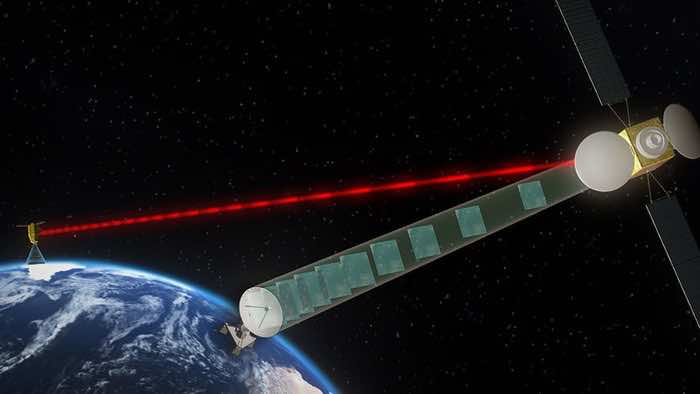Laser communication technology has come out of the boardroom towards actual implementation as the first Laser equipped satellite is set to be launched by the European Data Relay System (EDRS), or SpaceDataHighway at the end of this month. It is already being compared to having a fiber optic cable in space that will be able to provide high-speed internet and other forms of communication. The 1.8 Gigabit per second system is being launched through a partnership of two big names in European aerospace industry, Airbus, and European Space Agency. It will act as a relaying device between ground stations, satellites, and airplanes.
The EDRS-A as it is called, will be launched on January 28 from the biggest rocket launch facility in the planet, the Baikonur Cosmodrome in Kazakhstan on top of a Proton rocket. When it has reached the orbit, it will pair up with Sentinel-1 and Sentinel-2 of the European Earth Observation Program Copernicus and stations across the world in Asia, North America, Africa and Europe. The satellite was developed by Airbus Defense and Space and is currently being operated by Eutelsat. The Laser communication pod was made by Airbus subsidiary Tesat Spacecom at an approximated cost of 500 million Euros. It will allow the satellite to receive 50 terabytes of data each day with the help of the Laser communication terminal onboard.

It will allow us to predict natural disasters, monitor climate change and most importantly allow a seamless transfer of data from the stations to help in precious research being undertaken by the European scientists. It will also be sued for Intelligence Surveillance, agriculture and weather forecasting. A second satellite will be launched by 2017 and 2020 will see the entirety of Earth being covered with the help of three such satellites like in any geostationary orbit.
So, when are we going to see that kind of internet?


